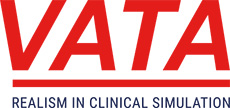Back to School: Wound Care Edition
As we head into fall, we’ve rounded up some of our top-selling wound care models—perfect for clinicians teaching students or CNAs refining their skills! Designed for realism and durability, our models provide an unparalleled training experience, simulating real human tissue for both student instruction and patient education.

Wilma Wound Foot
Ideal for training, skills assessment, and practicing dressing techniques for the care of patients with pressure injuries, ulcers, gangrene, and various other conditions.
Key Features:
- Molded from an actual 80-year-old patient’s foot for true-to-life realism
- Presents 20 wounds*, pressure injuries*, and foot abnormalities
- Hand-painted and detailed wounds
- Includes a positioning base for hands-free access when applying dressings or teaching
Seymour II Wound Care Model
Perfect for demonstrating wound cleansing, classification, staging, measurement, and use of negative pressure wound therapy devices.
Key Features:
- Molded from an actual 74-year-old patient for true-to-life realism
- Presents Stage 1, Stage 2, Stage 3 and deep Stage 4 pressure injuries, DTPI, unstageable, and dehisced wounds
- Made of a life-like material that permits easy application and removal of wound dressings without leaving adhesive residue
- Available in light and dark skin tones
Ostomy Pouching Trainer
Helps train and educate staff and patients on various stomas, complications, proper pouching technique, and general care.
Key Features:
- Realistic, life-sized, and the most complete pouching skills trainer offered anywhere
- Supplied with four different stomas can be placed in four different locations, allowing for numerous training scenarios
- Completely reversible, rotatable, and wearable
- Comes with simulated stool and urine that further the realism of training experience
Learn more about Ostomy Pouching Trainer…
Have questions or want to see these wound care models in action? Schedule a free demo!
*We have included the most likely etiology-based descriptions, but realize many wounds can appear in the same location, having different etiologies. The definitive diagnosis is up to the clinician and interprofessional wound care team.
